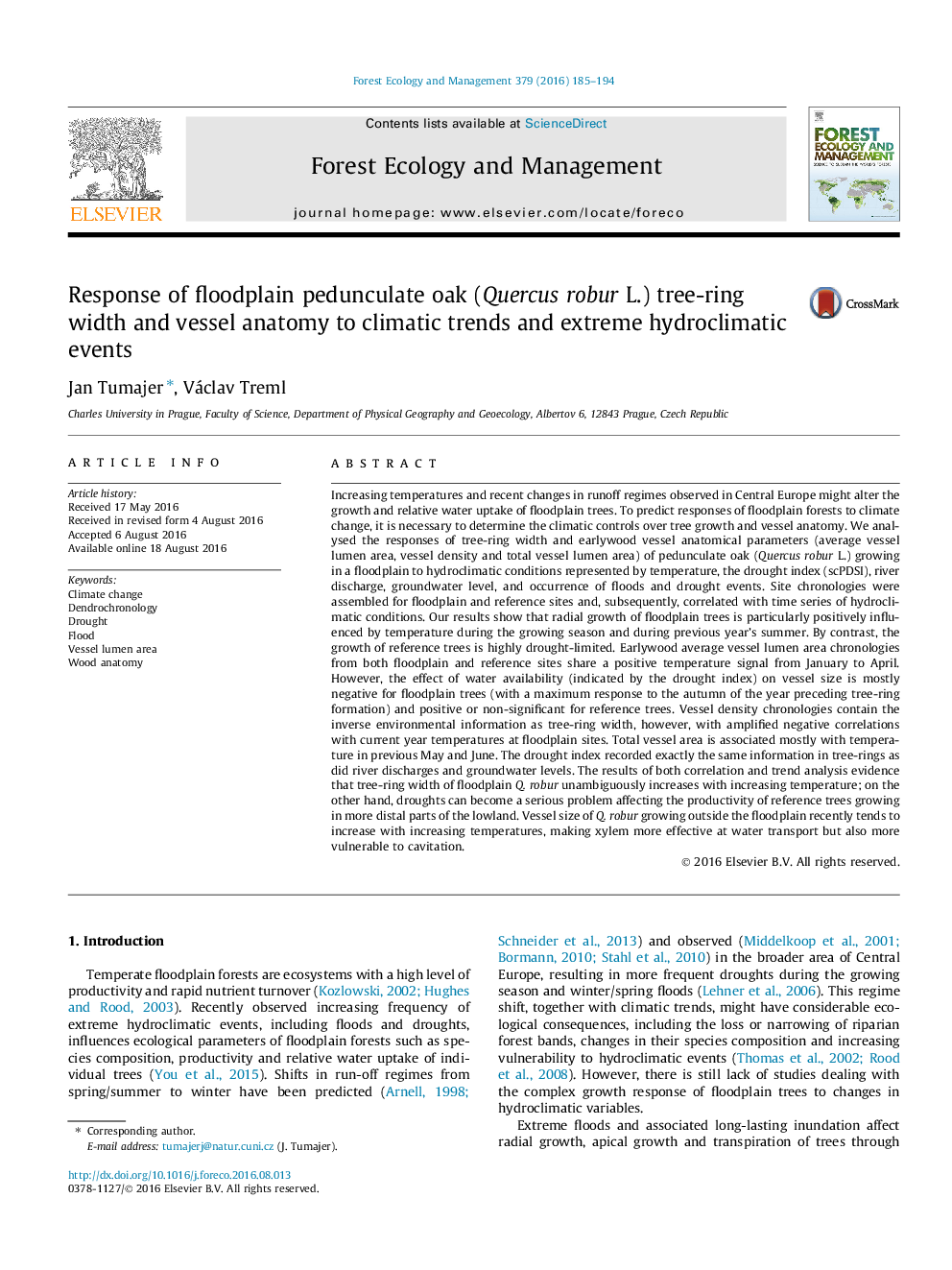| کد مقاله | کد نشریه | سال انتشار | مقاله انگلیسی | نسخه تمام متن |
|---|---|---|---|---|
| 6459639 | 1421379 | 2016 | 10 صفحه PDF | دانلود رایگان |

- Recent trends in growth of floodplain trees follow trends in temperature.
- Tree-ring width of lowland reference trees is limited by drought stress.
- Earlywood conduit size increases with recently increasing temperature.
- Total vessel area positively correlates with previous growing season temperature.
- Vessel density has stronger temperature signal of current year than tree-ring width.
Increasing temperatures and recent changes in runoff regimes observed in Central Europe might alter the growth and relative water uptake of floodplain trees. To predict responses of floodplain forests to climate change, it is necessary to determine the climatic controls over tree growth and vessel anatomy. We analysed the responses of tree-ring width and earlywood vessel anatomical parameters (average vessel lumen area, vessel density and total vessel lumen area) of pedunculate oak (Quercus robur L.) growing in a floodplain to hydroclimatic conditions represented by temperature, the drought index (scPDSI), river discharge, groundwater level, and occurrence of floods and drought events. Site chronologies were assembled for floodplain and reference sites and, subsequently, correlated with time series of hydroclimatic conditions. Our results show that radial growth of floodplain trees is particularly positively influenced by temperature during the growing season and during previous year's summer. By contrast, the growth of reference trees is highly drought-limited. Earlywood average vessel lumen area chronologies from both floodplain and reference sites share a positive temperature signal from January to April. However, the effect of water availability (indicated by the drought index) on vessel size is mostly negative for floodplain trees (with a maximum response to the autumn of the year preceding tree-ring formation) and positive or non-significant for reference trees. Vessel density chronologies contain the inverse environmental information as tree-ring width, however, with amplified negative correlations with current year temperatures at floodplain sites. Total vessel area is associated mostly with temperature in previous May and June. The drought index recorded exactly the same information in tree-rings as did river discharges and groundwater levels. The results of both correlation and trend analysis evidence that tree-ring width of floodplain Q. robur unambiguously increases with increasing temperature; on the other hand, droughts can become a serious problem affecting the productivity of reference trees growing in more distal parts of the lowland. Vessel size of Q. robur growing outside the floodplain recently tends to increase with increasing temperatures, making xylem more effective at water transport but also more vulnerable to cavitation.
Journal: Forest Ecology and Management - Volume 379, 1 November 2016, Pages 185-194